Running is something great, not only for your body but also for your mind. And it can be hard to enjoy running when you are regularly injured or aren’t able to improve due to your bad running form.
It was the case for me for a very long time, where I kept getting injured and wasn’t able to run as long as I wanted to. I later discovered that my running form was really bad and to improve my running performance, I will need to make drastic changes in my running form.
If you are here, it is certainly because you are not sure that your form is as great as you want it to be and want to improve it. And I am here to help you do exactly that.
We will first see what good form looks like and what could happen if your form is bad. Then we will analyze different mistakes you are probably doing and give you some advice on how you can fix these mistakes.
At the end of this article, you will be able not only to analyze your form but also to fix every single mistake you make and achieve a perfect form.
Let’s start by understanding what a good running form is.
Table of Contents
What is a good running form

Because running mainly involves the lower body, you may think that having a good running form is only about good footstrike, cadence, or stride length. But in reality, it is far from that.
When we are running, the whole body is in motion, and for our form to be considered good, it is important to have a good body posture, body alignment, and master arms and hand movements.
Speaking about body alignment: your lower body, upper body, neck, and head should follow a straight line.
What happens if I have a bad running form?
If you have a bad running form, you can face a lot of consequences, that can affect negatively your running performance or even your health.
The first one is the fact that having a bad running form increases your chances of being injured. Because when you run for a long time with a not optimal form, you put a lot of stress on several joints, muscles, and bones, which can lead to common injuries like shin splints, plantar fasciitis, or even a runner’s knee.

Even if you don’t get injured, having a bad running form reduces your overall running performance, because it is harder for the body to transfer energy from one stride to the next, which can decrease your speed and endurance.
It is also important to note that, certain bad running habits can cause muscle imbalance. For example, if you have an even stride length, you may be overusing one leg more than the other, which can cause uneven muscle development.
Imbalance in the muscles, can cause injuries and decrease your running performance.
Now that you know some consequences of a bad running form, let’s see how to analyze your form.
How to analyze my running form?
There are 2 ways to analyze your running form.
The first one is to have someone to see you run, preferably a coach. Having a coach is someone very great because you have an exterior insight into your technique and form. He can see when your form is not great and give you advice to improve.
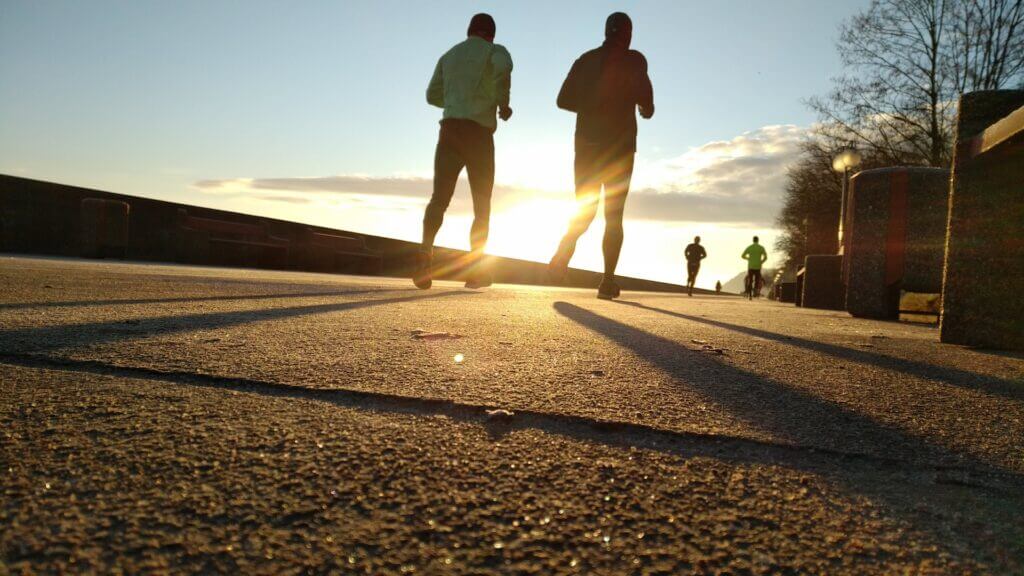
But not everyone has the financial capacity or is willing to have one. In this case, you can ask a friend /running partner to observe you while you are running. His advice may not be as good as the advice from a coach, but it is still better than nothing.
If you can’t have someone to observe you when you are running, you can just record yourself with your phone.
By seeing yourself running, you may notice some mistakes you are doing, and by reading an article like this, you will be able to correct them.
Let’s say you don’t have any footage of you running. You can still know that your form is bad if you have any of these symptoms.
5 Signs of Bad Running Form
If you ever had one of the following signs, you are doing something wrong and you need to fix your running form.
1. Pain or discomfort in your knees, hips, or lower back
Poor running form can put unnecessary stress on these joints and cause pain or discomfort. For example, overstriding can cause the knee joint to extend too far and cause strain on the joint while hunching over can lead to a rounding of the back and create strain on the lower back muscles.
Running with proper form distributes a load of running more evenly, reducing the risk of joint and muscle pain.
Read: Why Do My Ribs Hurt After Running?
2. Shortness of breath
Inefficient breathing mechanics caused by bad running form can make it harder to get enough oxygen, leading to shortness of breath.
For example, slouching over can restrict the lungs’ ability to expand, making it harder to breathe deeply. The proper running form includes maintaining an upright posture and engaging the core muscles to promote efficient breathing.
3. Excessive fatigue
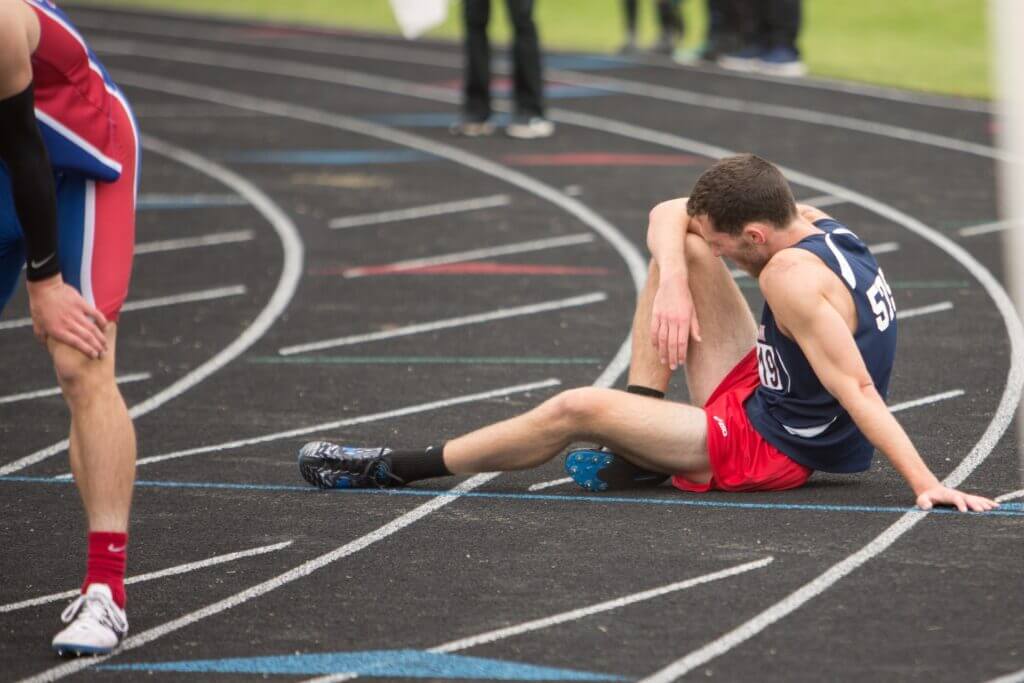
Poor running form can make it harder for your body to run efficiently, leading to increased fatigue.
For example, if you’re overstriding, you’re essentially braking with every step, which can tire out your muscles faster. Conversely, a proper running stride allows your body to propel itself forward with less effort, leading to less fatigue.
4. Uneven or choppy stride
Bad running form can cause your stride to be uneven or choppy, which can slow you down and make it harder to run longer distances. For example, if you have a cross-over gait, your feet are essentially wasting energy by crossing over each other, leading to a choppy stride that’s not conducive to running efficiently.
The proper running form includes maintaining a straight line with your legs, allowing for a smoother stride.
5. Lack of progress or improvement
If you’re not seeing improvement in your running ability despite putting in the effort, it could be due to poor running form hindering your progress.
For example, if you’re heel striking, you’re not utilizing your muscles efficiently, which can limit your ability to increase your speed or distance. The proper running form allows your body to function more efficiently, leading to greater progress and improvement over time.
If you see any of these signs during your runs, you need to analyze your form to know exactly what you are doing wrong.
5 Common Running Form Mistakes and How to Fix Them
Now that we know what a good running form is, and what the potential consequences of a bad running form are, we can analyze and find the root of the problem and the eventual solutions.

1. Overstriding
Overstriding is a running form issue that occurs when your foot lands too far ahead of your body, causing your heel to hit the ground first.
It is very common for new runners do this mistake, but sometimes experienced runners too. This can happen for a variety of reasons, including:
Trying to take longer strides
Some runners believe that taking longer strides will make them faster or more efficient. However, this can be counterproductive, as it can lead to overstriding and decreased efficiency.
Lack of flexibility
If you’re not flexible enough in your hip flexors or hamstrings, you may find it difficult to maintain proper running form. This can cause you to compensate by overstriding, as your body tries to reach forward to compensate for the lack of flexibility.
Fatigue
As you get tired while running, your body may naturally start to overstride in an attempt to maintain your pace. This can be problematic, as overstriding can lead to increased fatigue and decreased performance.
Overstriding can negatively impact your running performance by putting extra strain on your lower body, reducing efficiency, and increasing fatigue. It’s important to focus on maintaining a shorter, quicker stride with your feet landing directly underneath your body to avoid overstriding.
This allows your body to function more efficiently and reduces the risk of injury. Additionally, stretching and strengthening exercises can help improve your flexibility and running form, allowing you to run more efficiently and avoid overstriding.
How to avoid overstriding?
There are several ways you can avoid overstriding while running:
- Focus on a shorter stride
Instead of taking long strides, focus on taking shorter, quicker strides. This will help you land with your feet underneath your body, rather than in front of it, and will reduce the risk of overstriding.
- Increase your cadence
Your cadence is the number of steps you take per minute. Increasing your cadence can help you take shorter, quicker strides, which can reduce the risk of overstriding. Aim for a cadence of around 170-180 steps per minute.
Instead of landing on your heel, aim to land on the middle or front part of your foot. This can help reduce the impact of each stride and make it easier to maintain proper running form.
- Strengthen your core and lower body
A strong core and lower body muscles can help improve your running form, making it easier to avoid overstriding. Focus on exercises such as squats, lunges, and planks to strengthen these areas.
- Stretch regularly
Regular stretching can help improve your flexibility, making it easier to maintain proper running form. Focus on stretches that target your hip flexors, hamstrings, and calves, as these are common areas of tightness that can contribute to overstriding.
- Wear proper running shoes
Wearing shoes that provide adequate support and cushioning for your feet can help reduce the impact of each stride, making it easier to maintain proper form and avoid overstriding.
By incorporating these strategies into your running routine, you can reduce the risk of overstriding and improve your running performance. Remember to focus on proper form, take care of your body, and listen to your body’s signals to avoid injury and achieve your running goals.
2. Hunching over
Hunching over while running refers to a forward bending of the upper body at the waist, with the shoulders rounding forward and the back curving inward. This posture is sometimes called “slouching” and can be seen in runners who have poor upper body control and a weak core.
Hunching over while running is bad for a few reasons.
- First, it can restrict the expansion of the lungs, making it harder to breathe efficiently. This can lead to shortness of breath and reduced endurance.
- Second, it puts extra stress on the lower back muscles, which can lead to pain and injury.
- Finally, hunching over can cause the arms to swing across the body, which wastes energy and reduces running efficiency.
Hunching over while running can occur due to several factors.
One common cause is weak core muscles, which can make it difficult to maintain a stable posture while running. Additionally, fatigue can cause the upper body to collapse forward, especially toward the end of the long run. Finally, poor running posture habits developed over time can also contribute to hunching over.
For example, if a runner always slouches while sitting at a desk, they may naturally adopt the same posture while running.
How to avoid hunching over?
Here are some steps to fix hunching over while running:
- Engage your core muscles
Strong core muscles can help you maintain an upright posture while running, reducing the likelihood of hunching over. Engage your abs and lower back muscles to stabilize your torso and maintain a straight spine.
- Keep your shoulders relaxed
Avoid tensing up your shoulders or letting them creep up towards your ears. Keep them relaxed and slightly back, which will help open up your chest and make it easier to breathe deeply.
- Imagine a string pulling you up
Imagine a string attached to the top of your head, pulling you upwards towards the sky. This can help you maintain a tall, upright posture while running.
- Lean forward slightly
While it’s important to maintain an upright posture, a slight forward lean from the ankles can help you move forward more efficiently. Just be careful not to overdo it, as leaning too far forward can strain your lower back.
- Practice good posture habits
Developing good posture habits throughout the day can help you maintain an upright posture while running. Focus on sitting up straight and avoiding slouching when you’re at a desk or on the couch.
- Strengthen your back and core
Strengthening exercises for the back and core can help improve your posture and prevent hunching over while running. Consider adding exercises like planks, back extensions, and bird dogs to your workout routine.
Remember that fixing hunching over while running is a gradual process, and it may take time to correct bad posture habits and strengthen your muscles. Focus on maintaining good form, and be patient as you work towards a taller, more upright posture while running.
3. Heel striking

Heel Striking occurs when your heel makes initial contact with the ground during the running stride. This happens when the foot lands in front of the body, causing the heel to absorb most of the impact. It’s a common running form mistake that many runners make, particularly those who are new to running or who have never received formal running instruction.
Heel striking can be problematic for several reasons.
First, it can cause a jarring impact on the lower leg and foot, which can lead to pain, discomfort, and injury over time. Additionally, heel striking tends to slow down the running stride because the body has to decelerate with each step. This can make it harder to run efficiently and can limit overall speed and endurance.
Finally, heel striking can cause the foot to roll inward, which can lead to overpronation and further increase the risk of injury.
Heel striking occurs for a variety of reasons. One common cause is overstriding, which happens when the foot lands too far ahead of the body, causing the heel to make initial contact. Other causes of heel striking include weak or inactive muscles, running in shoes that lack proper support or cushioning, and simply being unaware of proper running form.
How To Avoid Heel Striking?
Here are some tips on how to fix heel striking while running:
- Shorten your stride
When you take shorter steps, your foot naturally lands closer to your body, which reduces the likelihood of heel striking. Aim to land with your foot underneath your hips rather than reaching out in front of you.
- Focus on landing midfoot or forefoot
Try to land on the middle or front part of your foot rather than on your heel. This will help to distribute the impact of each step more evenly throughout your foot and leg.
- Engage your core muscles
A strong core can help you maintain proper running form, including a proper foot strike. Focus on engaging your abdominal muscles and keeping your torso stable as you run.

- Lean forward slightly
Leaning forward can help to promote proper foot strike, as it naturally encourages you to land midfoot or forefoot rather than on your heel.
- Wear shoes that provide adequate support and cushioning
Running shoes with good support and cushioning can help to reduce the impact of each step and promote proper foot strike. Look for shoes that are designed specifically for running and have a midsole that provides shock absorption.
- Gradually increase your mileage and intensity
If you’re new to running or making changes to your form, it’s important to gradually increase your mileage and intensity to avoid injury. Start with shorter runs and gradually increase your distance and speed over time.
It’s important to note that correcting heel striking takes time and practice. Be patient with yourself and don’t expect to perfect your form overnight. By incorporating these tips into your training routine and focusing on proper form, you can reduce your risk of injury and improve your running performance over time.
4. Cross-over gait
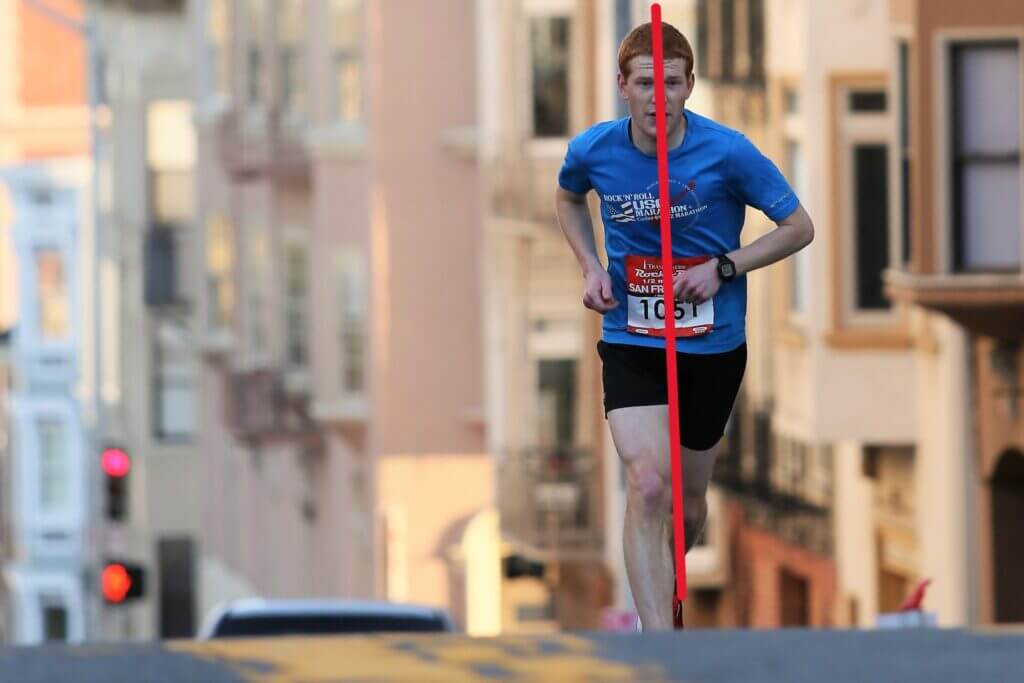
Cross-over gait is a type of bad running form where your feet cross over each other as you run. This means that your left foot crosses over the centerline of your body as you step with your right foot, and vice versa. This gait pattern is also known as “cross-stepping” or “scissoring”.
Cross-over gait is considered bad running form because it can lead to a variety of issues, including
- Increased risk of injury
Cross-over gait can put stress on your hips, knees, and ankles, which can increase the risk of developing injuries over time.
- Reduced efficiency
When your feet cross over each other, it creates a side-to-side motion that wastes energy and reduces the efficiency of your stride.
- Slower pace
Cross-over gait can also slow you down as it can lead to a shorter stride length and a choppy running motion.
Cross-over gait can occur due to a variety of factors, including weak hip abductor muscles, poor balance, and improper running shoes. Other possible causes include:
- Overstriding
When your feet land too far in front of your body, it can cause your legs to cross over each other as you run.
- Inward rotation of the hips
When your hips rotate inward excessively, it can cause your feet to cross over each other.
- Tightness in the hip flexors
Tight hip flexors can pull your legs inward, causing a cross-over gait.
How To Avoid Cross-over Gait?
To fix cross-over gait, it’s important to identify and address the underlying cause. Here are some ways to fix cross-over gait while running:
- Strengthen hip abductor muscles
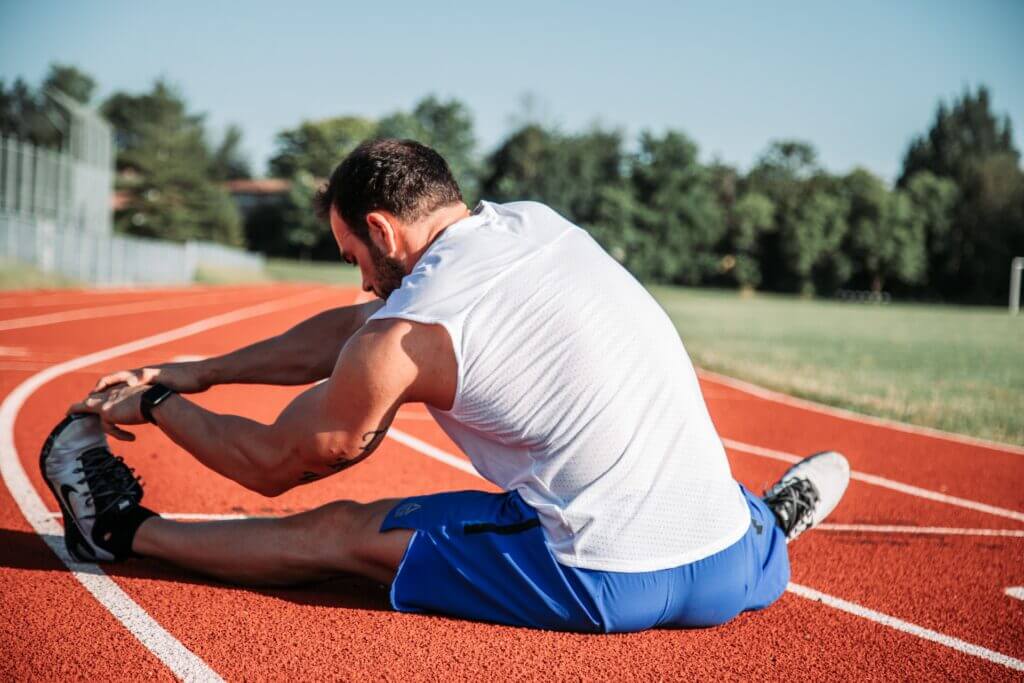
The hip abductor muscles are responsible for controlling the movement of your legs, and weak abductor muscles can contribute to a cross-over gait. Exercises like side leg lifts, clamshells, and lateral band walks can help to strengthen these muscles.
- Improve balance and stability
Good balance and stability are essential for maintaining proper running form. Exercises like single-leg squats and balance board exercises can help to improve your balance and stability, reducing the likelihood of a cross-over gait.
- Adjust your stride length
Overstriding can contribute to a cross-over gait, so it’s important to make sure that your feet are landing close to your body. A shorter stride length can help to reduce the side-to-side motion of your legs.
- Wear appropriate footwear
Proper running shoes can provide the support and stability needed to maintain good running form. Look for shoes that are designed for your foot type and running style, and replace them regularly as they wear out.
- Engage your core muscles
A strong core can help to maintain good posture and stability while running. Make sure to engage your core muscles by pulling your belly button towards your spine as you run.
- Work with a coach or physical therapist
If you’re struggling with a cross-over gait or other running form issues, working with a coach or physical therapist can be helpful. They can assess your running form, identify areas for improvement, and provide guidance on how to fix any issues.
5. Not engaging core muscles
Not engaging the core muscles while running means that the muscles in the abdomen and lower back are not activated to provide support and stability during the running motion. This lack of engagement can lead to poor posture, inefficient running form, and increased risk of injury.
Engaging the core muscles while running is important because it helps to stabilize the body, allowing for a more efficient transfer of energy from one stride to the next. When the core muscles are engaged, they provide support for the spine, allowing for proper alignment and reducing the risk of back pain.
Additionally, a strong core can help to improve running posture, which can reduce the risk of injury to the knees and other joints.
Not engaging the core muscles while running can occur for a variety of reasons. One common reason is that runners may not be aware of the importance of core engagement during running, or they may not know how to properly engage their core muscles.
Additionally, poor posture or weak core muscles can make it more difficult to engage the muscles during running.
How engage more your core muscles?
To engage the core muscles while running, it’s important to focus on maintaining good posture and engaging the muscles of the abdomen and lower back. Here are some ways to fix this problem while running:
- Practice good posture
Good posture is essential for engaging the core muscles while running. Stand up tall with your shoulders back and your chest open, and imagine that you’re pulling your belly button in towards your spine. This will help to engage your core muscles and keep your body in proper alignment while running.
- Perform core-strengthening exercises
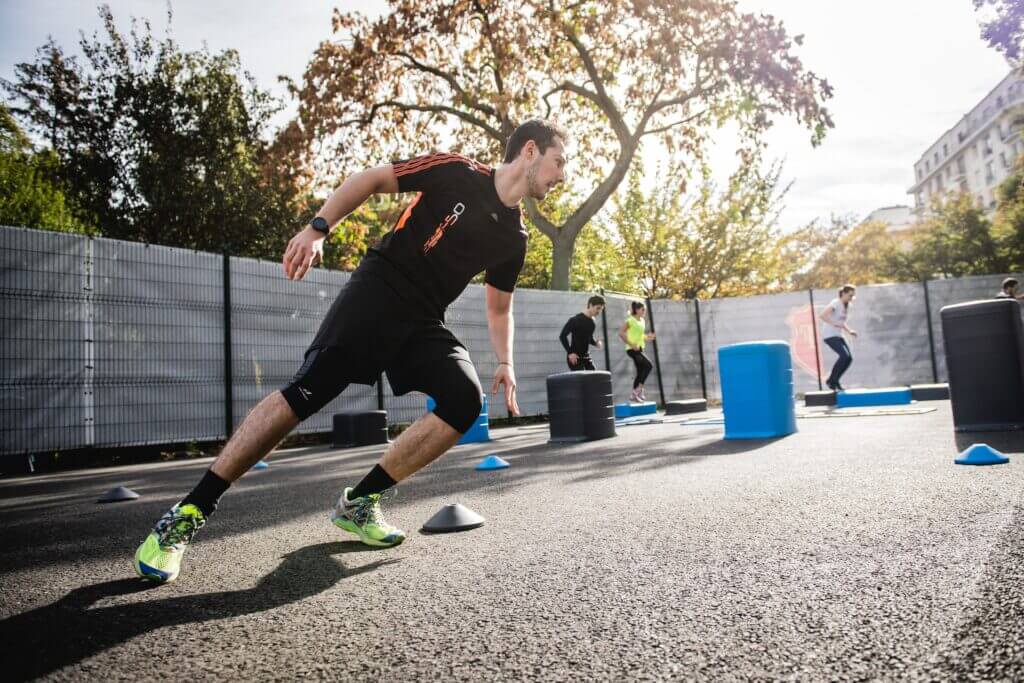
Building strength in the core muscles can help make it easier to engage them during running. Exercises such as planks, crunches, and bicycle crunches can help to strengthen the muscles of the abdomen and lower back.
- Focus on breathing
Proper breathing can help to engage the core muscles during running. Focus on taking deep breaths from your diaphragm and exhaling fully, which can help to activate the core muscles and promote good posture.
- Incorporate cross-training
Cross-training activities such as yoga or Pilates can help to improve core strength and flexibility, which can carry over to your running form.
- Get feedback from a coach or trainer
A coach or trainer can provide feedback on your running form and help you identify areas where you may need to engage your core muscles more effectively. They can also guide specific exercises or drills to help improve core engagement.
By incorporating these strategies into your running routine, you can improve your posture, engage your core muscles more effectively, and become a more efficient runner.
Read: How to Analyze and Improve Your Running Form
Conclusion
In conclusion, having good running form is crucial for achieving better performance, preventing injuries, and making running more enjoyable.
By identifying and fixing the common signs of bad running form such as overstriding, slouching, heel striking, and not engaging core muscles, runners can improve their efficiency and reduce their risk of injury.
Additionally, implementing general tips such as staying relaxed, maintaining good posture, and listening to the body can further help runners maintain good form. By applying the practical advice provided in this article, runners can work towards better form and a more enjoyable running experience.
So, make sure to pay attention to your form and strive for a smoother, more efficient run.
If you want to improve even more, you should also pay attention to the way you swing your arms during your runs. We wrote an article on this subject, which will help you achieve better running form and avoid some mistakes you are probably making.


